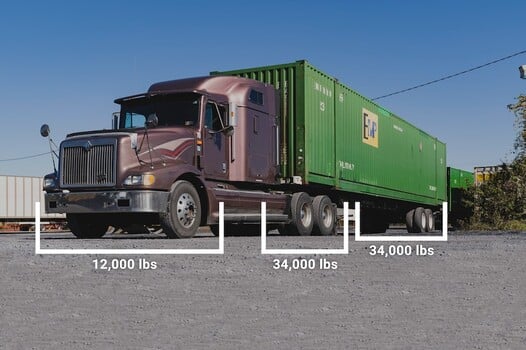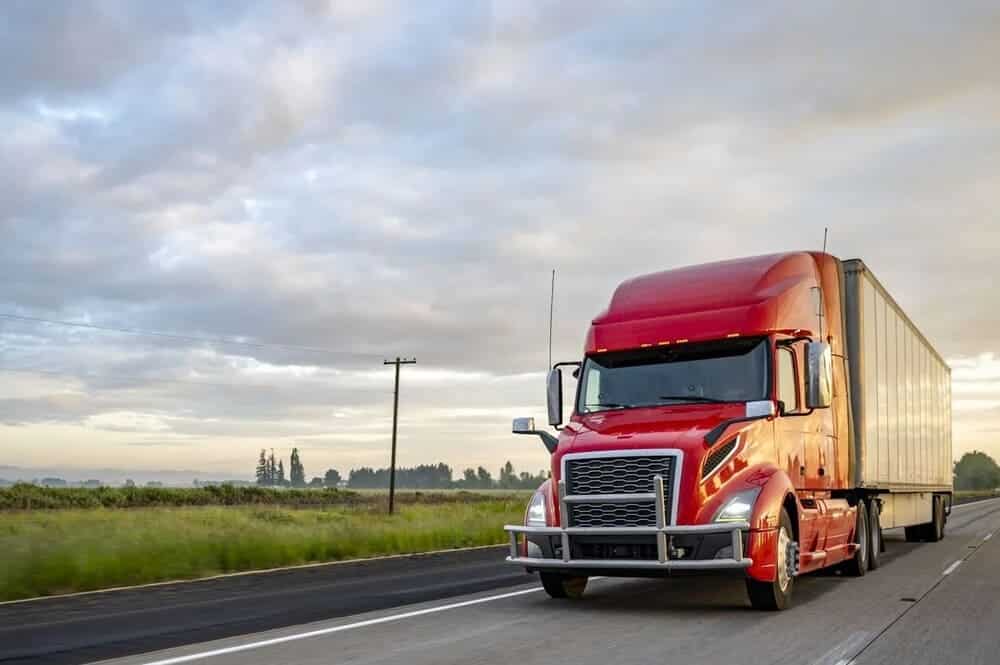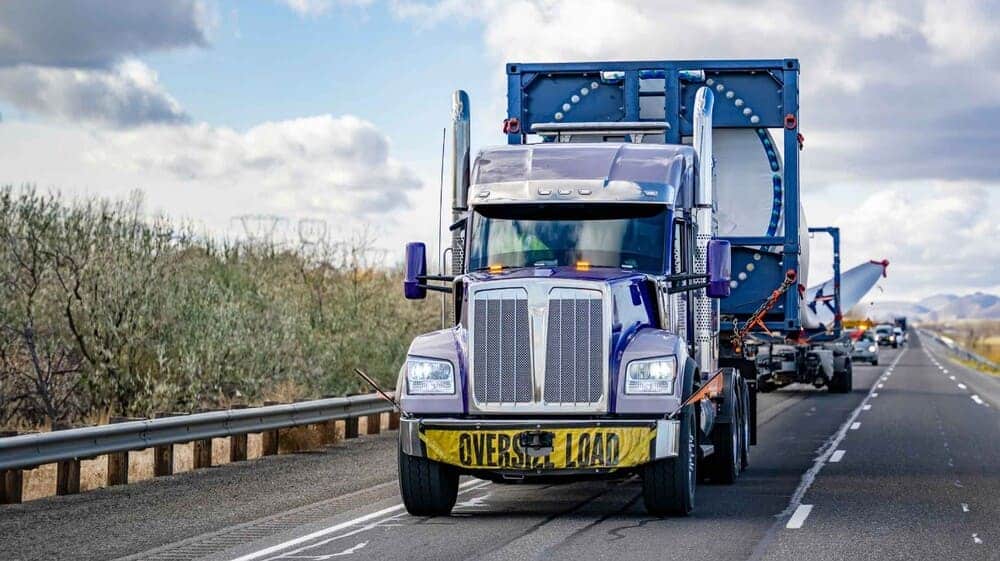

August 9, 2023

2086 Views

9 min read
How Much Weight Can a Truck Carry
Page Contents
Trucks play a crucial role in transporting goods across the nation. However, it is important to recognize that negligence in their operation can result in hazardous accidents. Each commercial truck possesses specific weight capacities that can be safely accommodated. Disregarding or forgetting these weight limits can be construed as negligence, potentially giving rise to personal injury claims or lawsuits. Therefore, one must familiarize oneself with the weight limits applicable to commercial trucks before engaging in any hauling activities.
Given the diverse range of trucks available, determining their weight capacities can take time and effort. FleetCare has compiled a comprehensive guide to clarify your truck’s weight capabilities.
Weight Capacity
The capacity of a truck to carry goods is commonly referred to as its payload capacity. This represents the maximum amount of additional load that the truck can safely carry in addition to its empty weight. Generally, semi-trucks with trailers have an unloaded weight between 14,000 to 16,000 pounds. Federal limits dictate that such trucks’ Gross Combined Weight Rating (GCWR) should not exceed 80,000 pounds.
It is important to acknowledge that although the maximum allowed weight for trucks on Federal Highways is capped at 80,000 pounds, the maximum weights for single axle, tandem axle, and other axle configurations can vary considerably across different states.
So, the operator must familiarize themselves with the applicable restrictions on highways and non-highways for the intended travel route. The operator must ensure compliance with the legal regulations and not exceed the authorized maximum gross vehicle or axle group weights for the specific routes in which the car will be operated.

Weight Classifications
In the past, the terminology of “half-ton,” “three-quarter-ton,” and “one-ton” was commonly used to simplify the understanding of a truck’s carrying capacity. However, with the increasing competitiveness in the manufacturing industry, these designations have become more of a general reference rather than an accurate depiction of a truck’s capabilities.
Trucks are now commonly classified into light-duty, medium-duty, and heavy-duty categories, with further subdivisions such as the half-ton range. While these divisions may provide a basic understanding of a truck’s carrying capacity, it is crucial to acknowledge that they serve as guidelines rather than rigid rules.
Light-Duty Trucks
According to the Federal Highway Administration (FHWA), light-duty trucks are vehicles with a gross vehicle weight rating (GVWR) of less than 10,000 pounds. However, trucks with more than two axles or six or more tires are not considered part of this category.
To classify light-duty vehicles according to federal emission control requirements, the Motor Vehicle Pollution Simulator (MOVES) is used. Under this classification, light-duty vehicles are identified as those with a GVWR of up to 8,500 pounds, irrespective of their FHWA rating. Another aspect where this classification is evident is in the class ratings. This classification is widely recognized and commonly employed by car manufacturers to categorize light-duty trucks as half-ton trucks.
Light-duty trucks are organized into two classes: Class 1 comprises vehicles with a Gross Vehicle Weight Rating (GVWR) below 6,000 pounds, while Class 2 includes vehicles with a GVWR below 10,000 pounds. Class 2 is then subdivided into Class 2A, referring to vehicles weighing 6,001 and 8,500 pounds, and Class 2B, encompassing vehicles weighing 8,500 and 10,000 pounds. Trucks categorized as Class 2A are occasionally called light-duty trucks, whereas those belonging to the Class 2B category are commonly recognized as light heavy-duty trucks.

FOR COMPREHENSIVE FLEET
MANAGEMENT SOLUTIONS
Medium-Duty Trucks
Medium-duty trucks can be classified into various categories, often used in vocational or professional settings where larger loads are transported. The classification is commonly used within the transportation and logistics industry. While the majority of medium-duty vehicles are used for commercial purposes, there are still some on the road that serve non-commercial purposes. The GVWR for medium-duty trucks can range from 10,001 to 26,000 pounds, showing a diverse range of medium-duty vehicles.
Heavy-Duty Trucks
Heavy-duty trucks refer to vehicles with a gross vehicle weight rating (GVWR) that exceeds 26,001 pounds. They are primarily employed for commercial purposes, including the transportation of goods such as dump trucks, cement mixers, utility trucks, and tractor trucks used for hauling dry vans or refrigerated trailers. Operating these vehicles necessitates the possession of a commercial driver’s license.
Do I Need A Commercial License To Drive A Semi-Truck?
When determining whether a commercial driver’s license (CDL) is necessary, many factors should be taken into account, including the gross vehicle weight rating (GVWR) of the semi-truck, the GVWR of the trailer, and the combined GVWR of both. If the GVWR of the trailer is 10,001 pounds or higher, and the combined GVWR of the truck and trailer exceeds 26,001 pounds, then obtaining a CDL is required. This requirement applies to various types of trucks, including standard pickup trucks capable of towing trailers.
However, there are exceptions to the Department of Transportation’s (DOT) restrictions that allow certain individuals to operate vehicles without a CDL. Examples of individuals in this category are farmers, select military drivers, and operators of off-road motorized construction equipment who meet specific criteria. It is important to note that this list is not exhaustive, and other circumstances may exempt individuals from the CDL requirement.

What Is a Box Truck’s Weight Capacity?
Box trucks are highly suitable vehicles for transporting a wide range of cargo, encompassing anything from many industrial pallets to furnishings in residential living spaces. Box trucks come in various sizes and classes, encompassing a broad spectrum of weight capacities. The weight-carrying capability of these trucks typically ranges between 8,000 and 33,000 pounds, contingent upon their respective size and class.
The size of the box directly impacts the weight capacity of the truck. Consequently, a smaller box truck will possess a lower payload capacity than its larger counterparts. When transporting hefty items using a box truck, verifying the maximum gross weight and payload limitations specific to your designated truck is crucial—overloading the truck risks damaging the cargo and jeopardizing the safety of oneself and others.
How Much Weight Can a Flatbed Carry?
A straight flatbed truck is a motor vehicle equipped with an open bed designed to load and transport various types of cargo. Unlike enclosed trucks, flatbeds lack walls and a roof, providing greater flexibility for loaders to stack and transport irregularly shaped or oversized items. This makes them particularly suitable for transporting cargo that conventional trucks cannot accommodate.
Flatbed trailers, often equipped with a five-axle setup, have a permissible weight range of 46,000 to 48,000 pounds for transporting cargo. Given this weight limitation, it is necessary to distribute the load along the length of the trailer, as neither a spread axle nor a closed tandem flatbed alone can support this entire weight.
It should be understood, however, that the actual loaded weight capacity of your flatbed’s axles may vary depending on their specific configuration and the regulations of the state(s) through which you are traveling.
How Much Weight Can a Dry Van Carry?
Dry vans are versatile in accommodating a wide range of cargo, including clothing, non-perishable food, electronics, construction materials, etc. A dry van’s maximum allowable freight weight ranges from 42,000 to 45,000 pounds.
Compared to flatbeds, dry van trailers has a higher weight due to the inclusion of a fiberglass encasement. This additional mass safeguards dry van freight against unfavorable weather conditions during transit. However, it is important to note that this feature also reduces load capacity compared to other trailers.
Moreover, it is worth mentioning that the overall weight of various trailer types can vary based on their specific construction. Consequently, this construction variability can either decrease or increase the overall weight of the trailers.
Step Deck Weight Capacity
Unlike conventional flatbed trailers, step deck trailers are designed to accommodate heavier loads. A typical two-axle step deck trailer boasts a maximum weight capacity of approximately 48,000 pounds or higher. Step deck trailers offer a highly adaptable solution for transporting oversized loads. These trailers feature a lowered deck or well, enabling cargo transportation up to 10 feet in height while maintaining the loading and unloading capabilities equivalent to those of a standard flatbed trailer.
However, it should be noted that certain states within the United States may permit greater weight limits for step deck trailers equipped with additional axles, subject to necessary permits and adherence to special conditions. Therefore, verifying the local regulations before hauling a substantial load on a step-deck trailer is crucial.
How Much Weight Can a Reefer Carry?
Refrigerated trailers, commonly known as reefers, serve as essential temperature-controlled units designed to facilitate the transportation of goods that require consistent thermal conditions, whether hot or cold. These trailers often transport chilled or frozen items instead of warm commodities.
One notable advantage of reefers is their adaptability to varying external weather conditions, allowing for adjustable interior temperatures. Regarding physical specifications, reefers conform to the standard dimensions of other truck types, such as flatbeds and dry vans, spanning a length of 48 to 53 feet. They boast a maximum width of 8.2 feet and a maximum height of 8 feet. The payload capacity of reefers typically ranges between 42,000 and 45,000 pounds.
Max Weight Capacity on Hotshot
The trailer’s size primarily determines the capacity of a hotshot trailer. In general, hotshot trailers typically span between 20 to 40 feet in length and possess the capacity to support a maximum weight of 21,000 pounds. Nonetheless, it is crucial to recognize that the quantity of pallets that can be accommodated on a hotshot trailer is subject to variability, contingent upon factors such as the dimensions of the pallets and the specific configuration of the trailer.
If you are looking for a reliable solution to ensure the timely delivery of your cargo without any complications, FleetCare is here to assist you. With several of experience in the hauling industry, we possess a diverse range of hauling equipment. Our dedicated support team is available 24/7 to ensure straight seamless operations. Regardless of the size of your load, we are fully equipped to fulfill your requirements. Contact us today to explore the comprehensive range of services we offer.
Sign up for Exclusive Trucking Tips
Test







